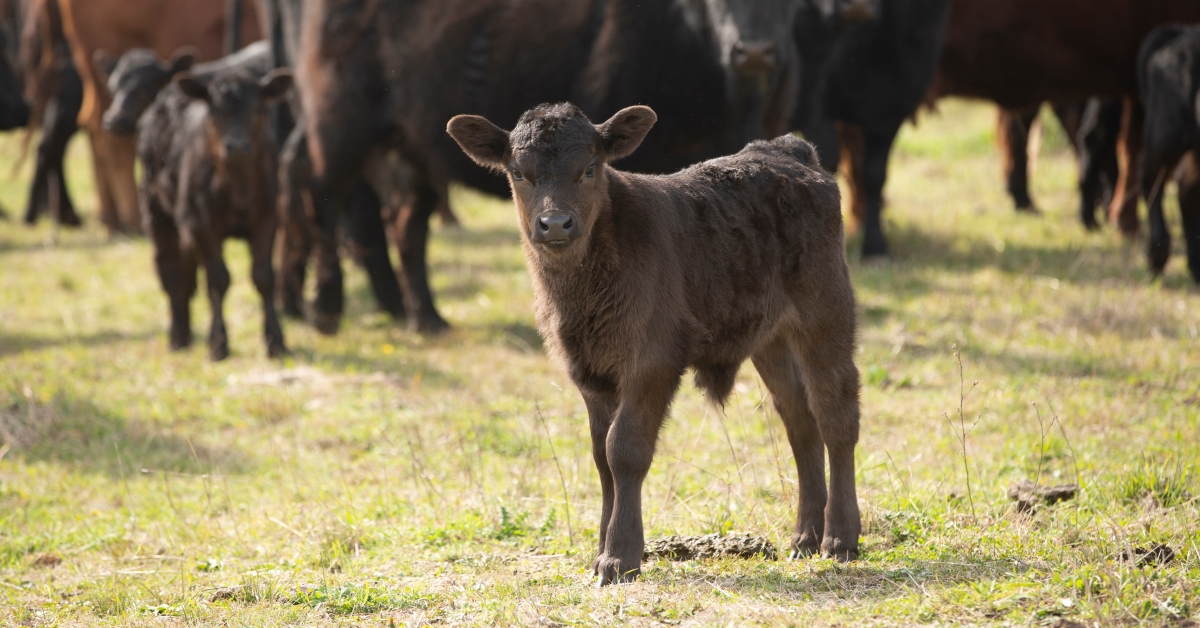
Weaning is one of the most challenging events of a calf’s life. Multiple stressors such as removal of the dam, exposure to novel feed sources, a different environment, and commingling are experienced at weaning. A calf is still expected to stay healthy and continue development and maybe even be pushed to meet performance benchmarks. Preparing calves for weaning and moving them along the production cycle is a key challenge to set up the success of that calf for future health, performance, and possible reproduction if the calf is a bull or replacement heifer.
As a producer, there are some nutritional tools that can be utilized during preconditioning to help make this time successful. Nutrition and diet can have a great influence on achieving goals for effective transition, from suckling calf to post-weaning and entering a feedyard. Preconditioning nutrition helps calves shift smoothly from a diet based on maternal milk and pasture to solid feed. Effective transition is crucial for supporting rumen development and preparing calves for the weaning process. It’s not a one-size-fits-all world, and many variables contribute to the complexity of what is best for each operation or even each individual calf.
Employing nutritional technology to better prepare calves for the weaning process and, at the same time, push along performance can offer a great return on investment. This discussion will focus on creep feeding, quality organic trace minerals, and prebiotics like Bio-Mos® 2.
Creep feeding is a management practice that involves providing supplemental feed to calves while they are still nursing. This method allows calves access to additional nutrients, including energy and protein beyond what they obtain from their mothers’ milk. The obvious reason to creep feed is to add weight at weaning, but the practice can provide many collateral benefits. Creep feeding is a great tool to help calves transition into diets they will encounter once they are weaned. Creep can also contain medications and additives to help enhance growth, health, and overall performance in young cattle.
Hubbard’s Blueprint® and SuperGain® creep feeds contain high-quality, nutrient-dense ingredients and are fortified with vitamins, Bioplex® organic trace minerals, Sel-Plex® selenium yeast, and Yea-Sacc® yeast, all to promote forage digestion and rumen stability. Several product formulations are available, allowing producers to choose the product that will work best based on their goals and timeline.
Organic trace minerals play a crucial role in the nutrition of cattle, especially during the receiving phase when animals are more susceptible to stress and health challenges. Alltech’s Bioplex organic trace minerals are available in multiple Hubbard Feeds products, including loose minerals, texturized feeds, creep feeds, and other supplements. These trace minerals are bound to amino acids and a range of peptides.
Including organic trace minerals in preconditioning diets for calves offers several benefits that contribute to overall health, performance, and well-being. Some of the key advantages of organic trace minerals in pre-weaning and receiving rations include improved absorption and bioavailability of these minerals, along with enhanced immune function. Organic trace minerals in particular are more readily absorbed and utilized by the animal’s body compared to inorganic minerals. This enhanced bioavailability ensures that cattle receive adequate levels of essential nutrients, supporting various physiological functions and promoting overall health. Organic trace minerals have also been shown to boost immune responses in cattle, helping them combat challenges encountered during the stressful preconditioning and weaning periods.
Weaning is a period associated with stress, susceptibility to diseases, and changes in gut microbiota. To mitigate these challenges and ensure a successful weaning process, innovative feed additives such as Alltech’s Bio-Mos 2 have gained popularity. Bio-Mos 2 is a prebiotic that can enhance gut health, immunity, and overall performance during this crucial phase of development. It is derived from yeast cell walls, containing mannan oligosaccharides (MOS) that act as natural prebiotics. These prebiotics function by promoting the growth of beneficial gut bacteria, enhancing gut barrier function, and supporting immune response. Bio-Mos 2 can be added to creep feed and is also available in a variety of other Hubbard Feeds products.
Putting many tools together can have an additive effect, providing more benefits in combination than each would separately. Hubbard Feeds has recently launched a product called Recharge® that does just that. It contains a unique combination of multiple technologies that include organic trace minerals, pre- and probiotics, all working together to promote animal health and performance. Recharge comes in many forms, including a ½ lb. pellet, premix, drench, or pressed block. It is designed to be used at the receiving period for 10–28 days as well as pulse-fed at five-day intervals throughout the feeding period as needed. It is especially useful in natural programs or anytime animals require a boost in nutrition. Reach out to your Hubbard Feeds representative for more information on how Recharge can fit into your weaning strategy.
In summary, nutrition centered around calf weaning can be an opportunity to foster growth and health in a time of stress and chaos. Tools like creep feeding, high-performance organic trace minerals, prebiotics like Bio-Mos 2, or supplements like Recharge can offer a significant return on investment by improving calf performance and immune response and helping transition the calf’s diet during weaning.
- Log in to post comments
